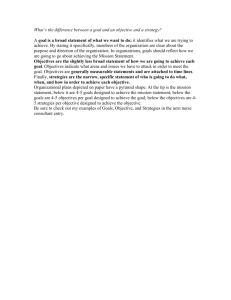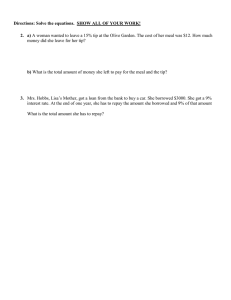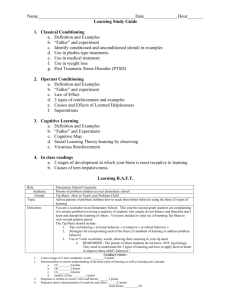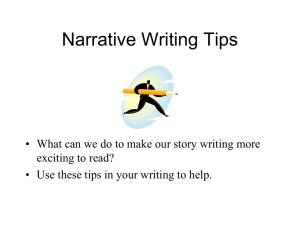NCSP Case Study Common Errors and Tips Common Error:
advertisement
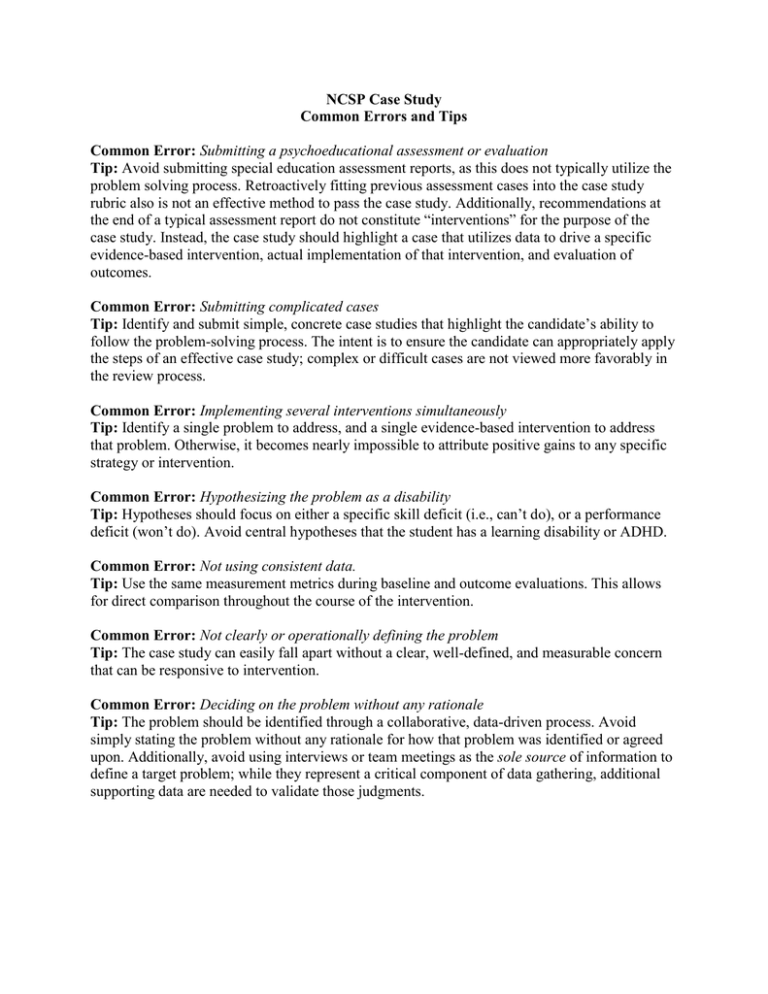
NCSP Case Study Common Errors and Tips Common Error: Submitting a psychoeducational assessment or evaluation Tip: Avoid submitting special education assessment reports, as this does not typically utilize the problem solving process. Retroactively fitting previous assessment cases into the case study rubric also is not an effective method to pass the case study. Additionally, recommendations at the end of a typical assessment report do not constitute “interventions” for the purpose of the case study. Instead, the case study should highlight a case that utilizes data to drive a specific evidence-based intervention, actual implementation of that intervention, and evaluation of outcomes. Common Error: Submitting complicated cases Tip: Identify and submit simple, concrete case studies that highlight the candidate’s ability to follow the problem-solving process. The intent is to ensure the candidate can appropriately apply the steps of an effective case study; complex or difficult cases are not viewed more favorably in the review process. Common Error: Implementing several interventions simultaneously Tip: Identify a single problem to address, and a single evidence-based intervention to address that problem. Otherwise, it becomes nearly impossible to attribute positive gains to any specific strategy or intervention. Common Error: Hypothesizing the problem as a disability Tip: Hypotheses should focus on either a specific skill deficit (i.e., can’t do), or a performance deficit (won’t do). Avoid central hypotheses that the student has a learning disability or ADHD. Common Error: Not using consistent data. Tip: Use the same measurement metrics during baseline and outcome evaluations. This allows for direct comparison throughout the course of the intervention. Common Error: Not clearly or operationally defining the problem Tip: The case study can easily fall apart without a clear, well-defined, and measurable concern that can be responsive to intervention. Common Error: Deciding on the problem without any rationale Tip: The problem should be identified through a collaborative, data-driven process. Avoid simply stating the problem without any rationale for how that problem was identified or agreed upon. Additionally, avoid using interviews or team meetings as the sole source of information to define a target problem; while they represent a critical component of data gathering, additional supporting data are needed to validate those judgments. Common Error: Setting unreasonable goals or identifying goal statements that do not consider the data. Tip: Rather than simply stating a goal, consider using expected growth trends or student and peer growth rates to set reasonable goals. For example, avoid setting a goal for a student to read on grade level following an 8-week intervention if the student is several years behind. Common Error: Not following the rubric’s structure and guidelines. Tip: Follow the rubric as a guide to ensure the highest likelihood of success. This includes sticking to the 10-page limit.


